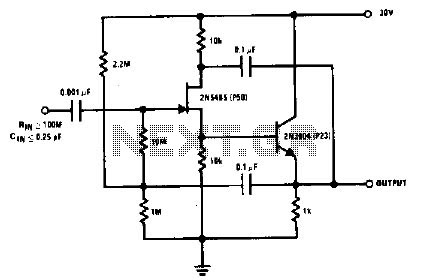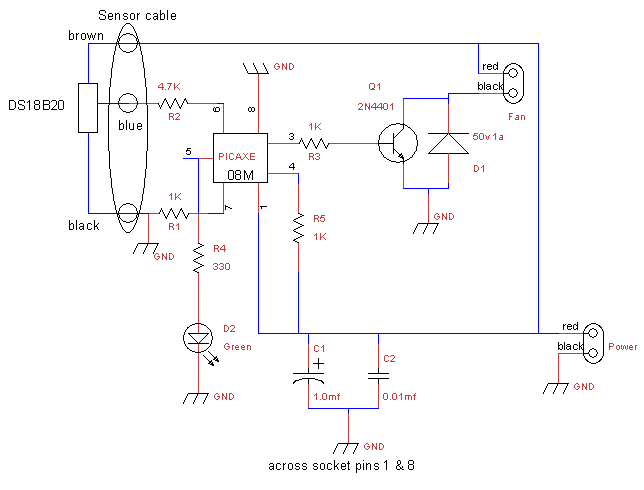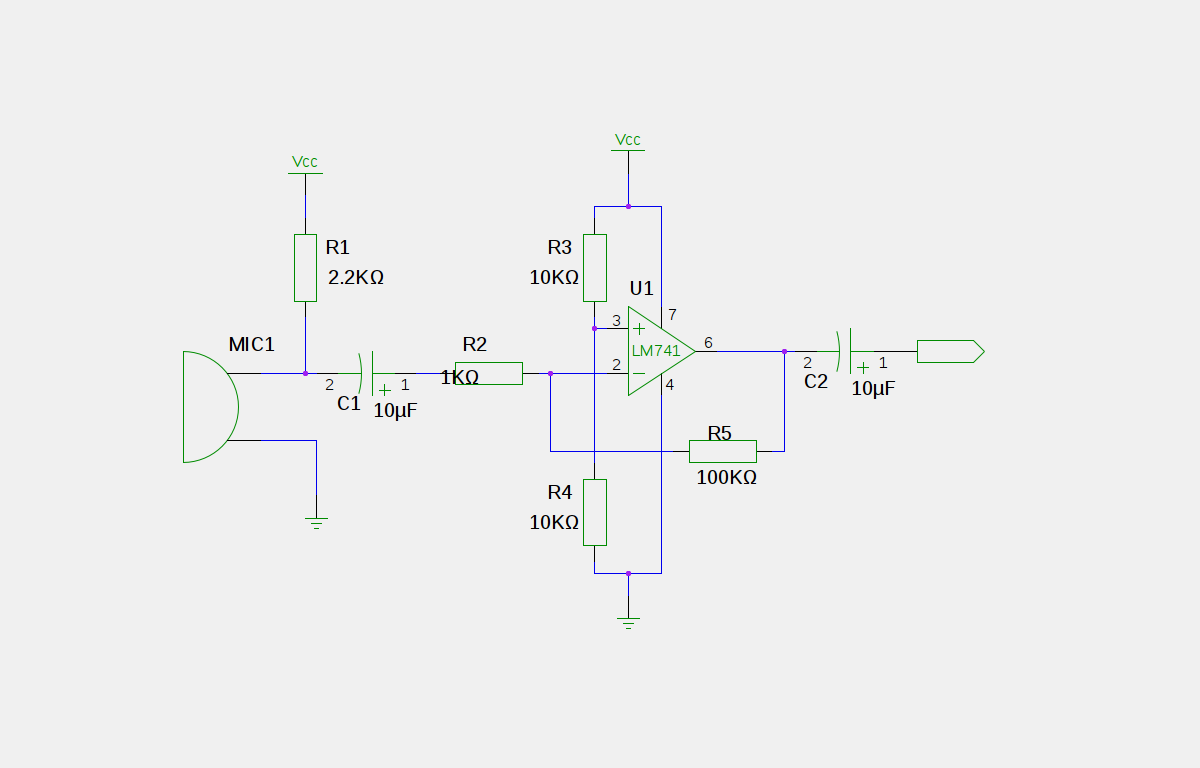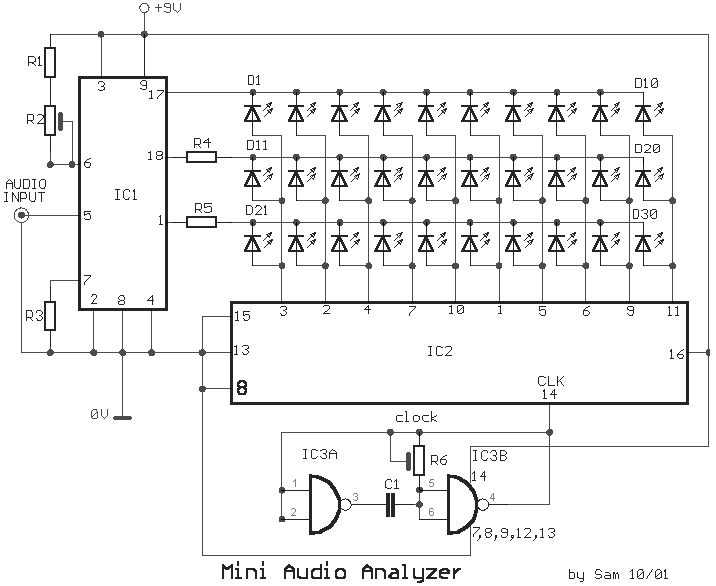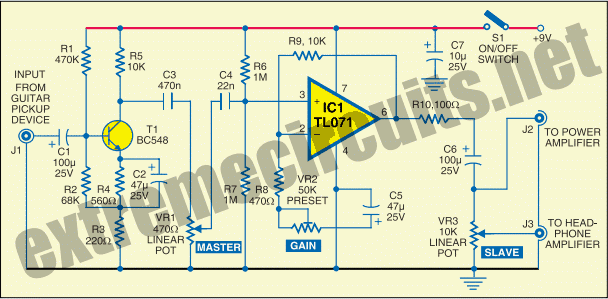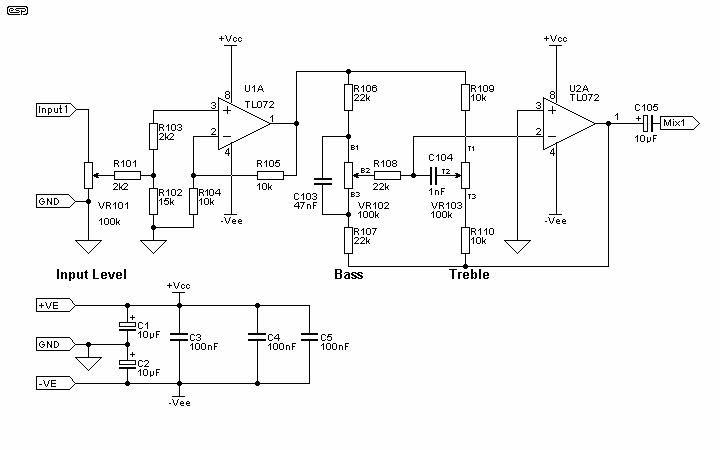
3 transistor audio amp 80 milliwatt
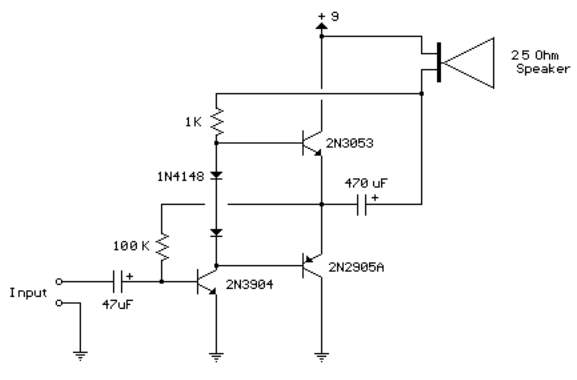
This circuit is similar to the previous one but employs positive feedback to enhance the amplitude delivered to the speaker. It was derived from a small 5-transistor radio utilizing a 25-ohm speaker. In the previous circuit, the load resistor for the driver transistor is connected directly to the positive supply, which presents a disadvantage; as the output becomes more positive, the voltage drop across the 470-ohm resistor diminishes, resulting in reduced base current to the upper NPN transistor. Consequently, the output cannot reach the positive supply since there would be no voltage across the 470-ohm resistor, leading to insufficient base current for the NPN transistor. This circuit addresses the issue to some extent, allowing for a larger voltage swing and potentially more output power, although the exact increase is uncertain without extensive testing. The output is still limited to a few volts with small transistors, as the peak current remains around 100mA into a 25-ohm load. However, it represents an improvement over the previous design. In this configuration, the 1k load resistor is connected to the speaker, so when the output becomes negative, the voltage across the 1k resistor decreases, facilitating the turn-off of the upper NPN transistor. Conversely, when the output turns positive, the charge on the 470µF capacitor assists in turning on the upper NPN transistor. The original circuit in the radio utilized a 300-ohm resistor where the two diodes are now positioned; this change allows the amplifier to function at lower voltages with reduced distortion. The transistors specified, 2N3053 and 2N2905, are components used in the previous circuit but could be substituted with smaller types. Most small transistors capable of handling 100mA or more can be employed. While 2N3904 or 2N3906 transistors may be slightly undersized, they can operate at low volume levels. The two diodes produce a relatively stable bias voltage as the battery depletes, minimizing crossover distortion. It is crucial to ensure that the idle current remains between 10 to 20 milliamps without a signal and that the output transistors do not overheat under load. The circuit is compatible with a standard 8-ohm speaker, though the output power may be somewhat diminished. To optimize performance, a resistor should be selected for the 100k position to set the output voltage at half the supply voltage (4.5 volts). This resistor can vary from 50k to 700k, depending on the gain of the transistor used in the 3904 position.
The circuit employs a configuration that enhances audio output by utilizing positive feedback, which is crucial for achieving higher amplitude levels. The design centers around a pair of NPN transistors, wherein the first transistor acts as a driver and the second as a power amplifier. The 470µF capacitor plays a pivotal role by storing charge, which is released to assist in the transition of the upper NPN transistor during positive output swings. The choice of a 1k load resistor connected to the speaker is intentional; it ensures that the output can effectively turn off the upper transistor when the output signal dips, thus maintaining efficient operation.
The introduction of diodes in place of the 300-ohm resistor serves to stabilize the biasing of the transistors, allowing the circuit to function efficiently across a range of supply voltages. This adjustment not only reduces distortion but also ensures that the amplifier can operate effectively even as the battery voltage decreases. The transistors selected should have sufficient current handling capabilities, with a preference for those exceeding 100mA to ensure reliable performance under load conditions.
It is essential to monitor the idle current to prevent overheating, which could lead to component failure. The output stage is designed to work with an 8-ohm speaker, which is a common impedance in audio applications, although users should be aware that power output may be less than optimal compared to a dedicated low-impedance design. The circuit's adaptability allows for a range of resistors to be used in determining the output voltage, providing flexibility based on the specific transistors chosen for the application. This design effectively balances performance and component selection, making it a viable option for small audio amplification needs.This circuit is similar to the one above but uses positive feedback to get a little more amplitude to the speaker. I copied it from a small 5 transistor radio that uses a 25 ohm speaker. In the circuit above, the load resistor for the driver transistor is tied directly to the + supply. This has a disadvantage in that as the output moves positive, the drop across the 470 ohm resistor decreases which reduces the base current to the top NPN transistor. Thus the output cannot move all the way to the + supply because there wouldn`t be any voltage across the 470 resistor and no base current to the NPN transistor.
This circuit corrects the problem somewhat and allows a larger voltage swing and probably more output power, but I don`t know how much without doing a lot of testing. The output still won`t move more than a couple volts using small transistors since the peak current won`t be more than 100mA or so into a 25 ohm load.
But it`s an improvement over the other circuit above. In this circuit, the 1K load resistor is tied to the speaker so that as the output moves negative, the voltage on the 1K resistor is reduced, which aids in turning off the top NPN transistor. When the output moves positive, the charge on the 470uF capacitor aids in turning on the top NPN transistor.
The original circuit in the radio used a 300 ohm resistor where the 2 diodes are shown but I changed the resistor to 2 diodes so the amp would operate on lower voltages with less distortion. The transistors shown 2n3053 and 2n2905 are just parts I used for the other circuit above and could be smaller types.
Most any small transistors can be used, but they should be capable of 100mA or more current. A 2N3904 or 2N3906 are probably a little small, but would work at low volume. The 2 diodes generate a fairly constant bias voltage as the battery drains and reduces crossover distortion. But you should take care to insure the idle current is around 10 to 20 milliamps with no signal and the output transistors do not get hot under load.
The circuit should work with a regular 8 ohm speaker, but the output power may be somewhat less. To optimize the operation, select a resistor where the 100K is shown to set the output voltage at 1/2 the supply voltage (4. 5 volts). This resistor might be anything from 50K to 700K depending on the gain of the transistor used where the 3904 is shown.
🔗 External reference
The circuit employs a configuration that enhances audio output by utilizing positive feedback, which is crucial for achieving higher amplitude levels. The design centers around a pair of NPN transistors, wherein the first transistor acts as a driver and the second as a power amplifier. The 470µF capacitor plays a pivotal role by storing charge, which is released to assist in the transition of the upper NPN transistor during positive output swings. The choice of a 1k load resistor connected to the speaker is intentional; it ensures that the output can effectively turn off the upper transistor when the output signal dips, thus maintaining efficient operation.
The introduction of diodes in place of the 300-ohm resistor serves to stabilize the biasing of the transistors, allowing the circuit to function efficiently across a range of supply voltages. This adjustment not only reduces distortion but also ensures that the amplifier can operate effectively even as the battery voltage decreases. The transistors selected should have sufficient current handling capabilities, with a preference for those exceeding 100mA to ensure reliable performance under load conditions.
It is essential to monitor the idle current to prevent overheating, which could lead to component failure. The output stage is designed to work with an 8-ohm speaker, which is a common impedance in audio applications, although users should be aware that power output may be less than optimal compared to a dedicated low-impedance design. The circuit's adaptability allows for a range of resistors to be used in determining the output voltage, providing flexibility based on the specific transistors chosen for the application. This design effectively balances performance and component selection, making it a viable option for small audio amplification needs.This circuit is similar to the one above but uses positive feedback to get a little more amplitude to the speaker. I copied it from a small 5 transistor radio that uses a 25 ohm speaker. In the circuit above, the load resistor for the driver transistor is tied directly to the + supply. This has a disadvantage in that as the output moves positive, the drop across the 470 ohm resistor decreases which reduces the base current to the top NPN transistor. Thus the output cannot move all the way to the + supply because there wouldn`t be any voltage across the 470 resistor and no base current to the NPN transistor.
This circuit corrects the problem somewhat and allows a larger voltage swing and probably more output power, but I don`t know how much without doing a lot of testing. The output still won`t move more than a couple volts using small transistors since the peak current won`t be more than 100mA or so into a 25 ohm load.
But it`s an improvement over the other circuit above. In this circuit, the 1K load resistor is tied to the speaker so that as the output moves negative, the voltage on the 1K resistor is reduced, which aids in turning off the top NPN transistor. When the output moves positive, the charge on the 470uF capacitor aids in turning on the top NPN transistor.
The original circuit in the radio used a 300 ohm resistor where the 2 diodes are shown but I changed the resistor to 2 diodes so the amp would operate on lower voltages with less distortion. The transistors shown 2n3053 and 2n2905 are just parts I used for the other circuit above and could be smaller types.
Most any small transistors can be used, but they should be capable of 100mA or more current. A 2N3904 or 2N3906 are probably a little small, but would work at low volume. The 2 diodes generate a fairly constant bias voltage as the battery drains and reduces crossover distortion. But you should take care to insure the idle current is around 10 to 20 milliamps with no signal and the output transistors do not get hot under load.
The circuit should work with a regular 8 ohm speaker, but the output power may be somewhat less. To optimize the operation, select a resistor where the 100K is shown to set the output voltage at 1/2 the supply voltage (4. 5 volts). This resistor might be anything from 50K to 700K depending on the gain of the transistor used where the 3904 is shown.
🔗 External reference
